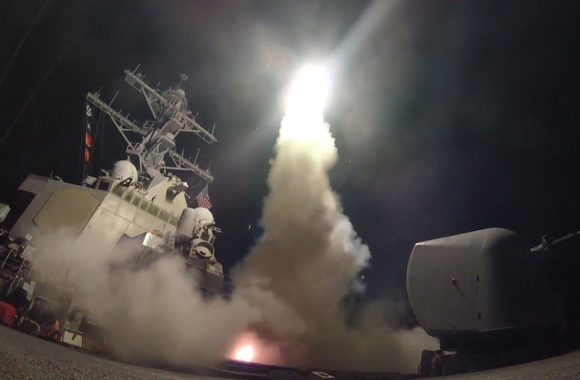In my generation decades ago, we greeted air raid drills with a sense of relief. They meant a respite from long-division lessons and grammar recitations.
But those drills came before Hawaii, before the end of the world seemed to have arrived last week.
Long ago in the public schools all over America, sirens would sound or school bells would clang, and teachers would say, “Everybody under your desks.” Or, “Everyone into the hall,” where you’d be told to crouch as low as you could — as though this alone would protect you from the nuclear bombs about to obliterate everything.
But we had the luxury of laughing at war back then, because those air raid drills were strictly theoretical. We had a Cold War then, so the grown-ups wanted some practice runs. But not many children connected the phrase “air raid drills” with actual human catastrophe.
And nobody said the thing that was said last week in Hawaii. Nobody said, “This is not a drill. This is the real thing.”
And so, for 38 minutes, everyone on those Pacific islands thought the end of civilization had arrived.
Did you see that Hawaiian man on CNN, in the aftermath of the false alarm? He said that, in the midst of the panic, his eight-year old daughter asked him, “Daddy, are we at war?”
“Yes,” he told her.
And the daughter looked at him and asked, “Why?”
That’s the question that would have to be asked by anyone who managed to survive a nuclear war: Why? What was so important that we had to destroy lives?
And that’s why it’s so crucial to raise the level of communication between Washington and Pyongyang. So far, it’s not only been childish (Who has the bigger button?), and unnecessarily aggressive (Name calling? Really, guys?), but disgraceful – on both sides.
The false alarm out of Hawaii reminds us how dangerous this is. Imagine being a parent, and you’ve got children scattered in different places. Which one do you race to embrace? Which children were left alone last week – and will spend a lifetime now, wondering why Mom or Dad raced to embrace some other sibling?
It’s easy to laugh at the old air raid drills now. We survived those years. We recall teachers telling us, “No talking,” as we crouched in the halls – as though anyone talking during a real nuclear attack would be kept after school.
But Hawaii drains away all the laughter. For 38 minutes, it seemed like the real thing. Can’t our leaders talk about it like adults, instead of like schoolchildren?
 A former Baltimore Sun columnist and WJZ-TV commentator, Michael Olesker is the author of six books. His most recent, “Front Stoops in the Fifties: Baltimore Legends Come of Age,” has just been re-issued in paperback by the Johns Hopkins University Press.
A former Baltimore Sun columnist and WJZ-TV commentator, Michael Olesker is the author of six books. His most recent, “Front Stoops in the Fifties: Baltimore Legends Come of Age,” has just been re-issued in paperback by the Johns Hopkins University Press.





